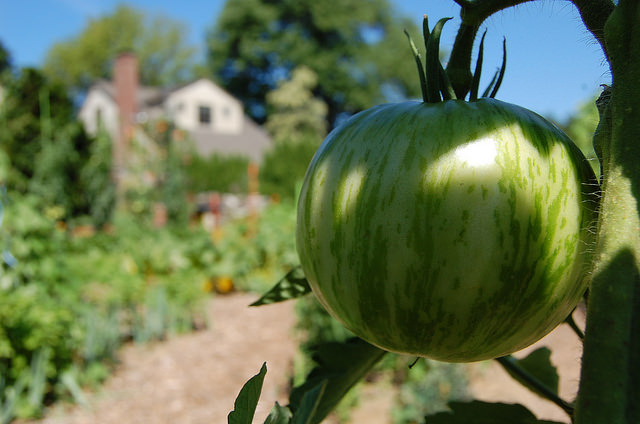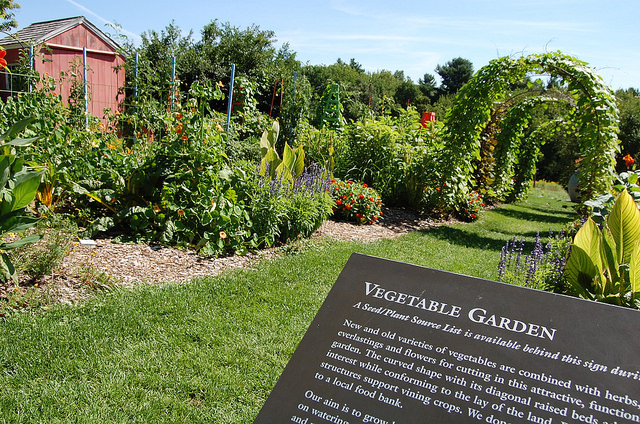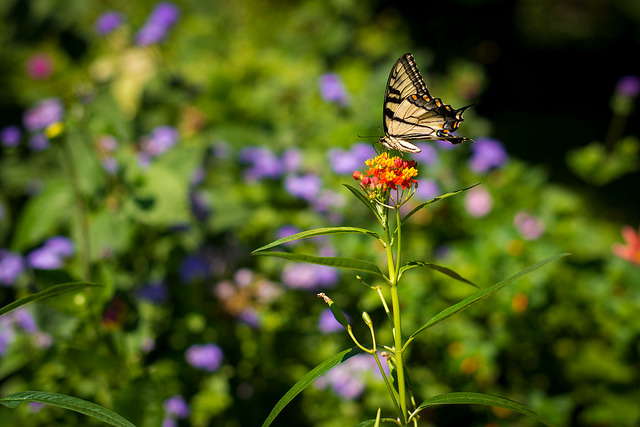By Robert Burgess
New England Botanic Garden at Tower Hill Staff
Here in Massachusetts, some towns have received about eight inches less than the normal amount of rain expected by this time of year. Clearly, we’d all prefer the normal conditions we’ve all come to expect. Plants, farmers and wildlife are clearly suffering as explained in this recent Boston Globe article. But have there been any benefits to this dry spring and summer for home gardeners?
1)There appear to be fewer destructive bugs this gardening season. This article in the Telegram & Gazette explains the reduced number of ticks in the area. There also seem to be fewer mosquitoes – their typical pools of stagnant water spots a rarity this summer – unless you live near a stream where there are more still spots than usual. In my garden at home, I’ve noticed fewer beetles, squash bugs, aphids, and hungry caterpillars.
2) The damp conditions that tend to favor diseases in the night shade family (blights within tomato plantings) and in the curcubit family (powdery mildew on pumpkins) have been much rarer this summer, according to the UMass Extension Vegetable Program, because of the hot and dry weather.
3) Most of us gardeners haven’t had to worry about water too much in previous gardening seasons, certainly not like they do in California, which is now five years into a severe drought. Us New England gardeners often think in eco-conscious terms (we don’t want to waste a resource like water) and economic terms (we want to make sure the impending water bills will be manageable). We design our gardens and landscapes to withstand brief periods of water restrictions that are common each summer. But this prolonged drought has encouraged many more of us to heed New England Botanic Garden at Tower Hill’s motto: “Put the right plant, in the right place.” That has many more of us looking closer at excellent gardens like New England Botanic Garden at Tower Hill’s for tips (mulching, watering deeply, drip irrigation), reading ideas from our favorite garden writers, as well as googling “Drought resistant plants” and “Gardening in a drought” to learn more about how to make our properties more sustainable.
4) Area lawns went dormant far earlier in the calendar than normal because of the dry, hot weather. Sure, one can lament the brown grass view between his or her front door to the curb. But here’s a half glass full thought: We’ve all been given a gift with slower growing lawns – or perhaps no growing. For those who typically pay for someone to mow the lawn, they’ve saved a few bucks. For those of us who mow ourselves, we’ve been gifted a few hours a week back in time to spend doing something else. It has inspired many of us to wonder: “Do I even need a lawn?” That’s music to the ears of area butterflies, bees, hummingbirds, and pollinators who must throw secret parties each time a mono-cultured lawn environment is transformed into a pollinator’s wildflower paradise.
The benefits of drought don’t outweigh the harm that has been inflicted in myriad ways to our beloved plants and wildlife. Our ecosystems have been stunted, shocked, and stressed. The sooner steady rains return (we haven’t had a full day of rain in my Middlesex County town since April), the better. But let’s take the lessons learned into future gardening seasons and landscaping decisions. Every hardship provides an opportunity for growth.
Robert Burgess is the public relations coordinator at New England Botanic Garden at Tower Hill in Boylston, Massachusetts, and an amateur home gardener.



